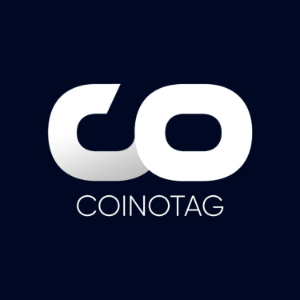TRON Mixed Shelf Offering: Nasdaq-Listed Giant Unveils Bold $1 Billion SEC Filing
9 min read
BitcoinWorld TRON Mixed Shelf Offering: Nasdaq-Listed Giant Unveils Bold $1 Billion SEC Filing The cryptocurrency world is abuzz with news that TRON Inc., a prominent player in the blockchain space, has made a monumental move in traditional finance. Fresh off its Nasdaq listing via a reverse merger with SRM Entertainment, TRON has now filed with the U.S. Securities and Exchange Commission (SEC) to offer up to a staggering $1 billion in mixed shelf securities. This strategic maneuver, first reported by Unfolded on X citing Reuters, marks a significant moment for the blockchain firm, bridging the gap between decentralized technology and conventional financial markets. But what exactly does this TRON mixed shelf offering entail, and what could it mean for the future of the TRON ecosystem and the broader crypto industry? Understanding the TRON Mixed Shelf Offering: What Does It Mean? When a company files for a mixed shelf offering with the SEC, it essentially registers a variety of securities – which can include common stock, preferred stock, debt securities, warrants, or units – that it can sell ‘off the shelf’ over a period, typically up to two or three years. The term ‘mixed’ indicates that the offering can consist of different types of securities, providing the company with immense flexibility. This isn’t an immediate sale of $1 billion worth of securities; rather, it’s an authorization to sell them as needed, based on market conditions and the company’s capital requirements. For TRON, this move signifies several key aspects: Flexibility in Fundraising: A shelf offering allows TRON to raise capital quickly when favorable market conditions arise, without needing to go through a lengthy SEC registration process each time. Strategic Capital Deployment: The funds raised could be used for various purposes, including working capital, strategic acquisitions, research and development, or expanding its blockchain ecosystem. Enhanced Legitimacy: Filing with the SEC and adhering to traditional financial regulations adds a layer of credibility and transparency, potentially attracting a wider range of institutional investors who might be hesitant to invest directly in crypto assets. Why Is TRON Pursuing a Mixed Shelf Offering Now? The timing of TRON’s decision to pursue a TRON mixed shelf offering is noteworthy. The cryptocurrency market has seen significant volatility, yet also a growing trend towards institutional adoption and regulatory clarity. TRON’s prior listing on Nasdaq through a reverse merger already signaled its ambition to integrate with mainstream finance. This shelf offering takes that ambition a step further. Several factors could be at play: Capital for Growth: TRON, like any ambitious technology company, requires substantial capital to fund its ongoing development, expand its decentralized applications (dApps) ecosystem, and potentially acquire other projects or companies that align with its vision. A $1 billion war chest provides significant leverage for such initiatives. Market Confidence: By preparing to tap into traditional capital markets, TRON is demonstrating confidence in its long-term viability and growth prospects. It’s a signal to both crypto enthusiasts and traditional investors that TRON is building for the future, not just riding speculative waves. Regulatory Compliance: In an increasingly scrutinized regulatory environment for cryptocurrencies, TRON’s move to file with the SEC can be seen as a proactive step towards compliance. It positions TRON as a more transparent and regulated entity, which could be beneficial in the long run for its global operations. What Are the Implications for TRON and TRX Holders? The announcement of a potential $1 billion TRON mixed shelf offering carries significant implications for the TRON ecosystem and its native cryptocurrency, TRX. Understanding these implications is crucial for investors and participants in the TRON network. Potential Benefits: Increased Development and Innovation: Access to substantial capital can accelerate TRON’s development roadmap, leading to new features, improved scalability, and a more robust network. This could drive greater utility and adoption for TRX. Enhanced Market Visibility and Trust: A public offering on Nasdaq, backed by SEC filings, significantly raises TRON’s profile in traditional financial circles. This increased visibility and the implied regulatory compliance could attract more institutional investors and mainstream users, potentially boosting demand for TRX. Strategic Partnerships and Acquisitions: With $1 billion at its disposal, TRON could pursue strategic partnerships or acquire other blockchain projects, expanding its reach and capabilities, which could indirectly benefit TRX by growing the overall ecosystem. Long-Term Stability: A strong financial foundation can help TRON weather market downturns and ensure continued operation and development, providing a sense of stability for the community. Potential Challenges and Considerations: Potential Dilution: If the mixed shelf offering includes the sale of new common stock, it could lead to dilution for existing shareholders (and by extension, potentially impact the perceived value of TRX if the market associates the equity with the token). While TRX is a utility token, market sentiment can often conflate the company’s equity with its token’s value. Market Reaction: While the news generally signifies positive growth, the market’s immediate reaction to such filings can be unpredictable. Some investors might view it as a precursor to dilution or a sign of needing external capital, leading to short-term price fluctuations for TRX. Execution Risk: Successfully executing a large-scale shelf offering and deploying the capital effectively requires strong management and market timing. Poor execution could negate the potential benefits. Regulatory Scrutiny: While seeking compliance, the increased visibility also means increased scrutiny from regulators. TRON will need to navigate complex legal and financial frameworks meticulously. The Broader Regulatory Landscape: SEC’s Role in Crypto TRON’s decision to engage with the SEC through a mixed shelf offering highlights the ongoing tension and evolution in the crypto regulatory landscape. The SEC has been increasingly active in regulating the cryptocurrency space, often through enforcement actions. However, a traditional filing like TRON’s represents a different approach – one of proactive engagement and compliance. This move could be seen as a blueprint for other established crypto entities seeking to bridge the gap between decentralized finance (DeFi) and traditional finance (TradFi). It suggests that while direct regulation of crypto tokens remains a contentious issue, companies operating in the crypto space can still access traditional capital markets by adhering to existing securities laws for their corporate entities. The SEC’s acceptance of such a filing from a company deeply involved in the blockchain industry could be interpreted as a subtle acknowledgment of the growing legitimacy of the crypto sector, albeit under the strictures of established financial regulations. How Does TRON’s Strategy Compare to Other Crypto Projects? While many crypto projects focus solely on decentralized funding mechanisms (like ICOs, IEOs, or token sales), TRON’s approach of leveraging traditional public markets is less common but not entirely unprecedented. Companies like Coinbase and MicroStrategy have embraced public listings and traditional finance, but TRON’s path through a reverse merger and now a substantial shelf offering showcases a unique hybrid strategy. This strategy reflects a growing maturity in the crypto industry, where projects are exploring diverse avenues for funding and expansion beyond the crypto-native fundraising models. It signals a potential shift towards greater integration with conventional financial systems, offering a pathway for projects to access larger pools of institutional capital that are often restricted from direct crypto investments. Consider the table below for a quick comparison of funding approaches: Funding Approach Key Characteristics Examples (Crypto Context) Pros for Projects Cons for Projects Initial Coin Offering (ICO) / Token Sale Direct sale of new tokens to the public, often decentralized. Ethereum (2014), EOS (2017) Decentralized, global reach, quick capital. Regulatory uncertainty, high volatility, less institutional trust. Venture Capital (VC) Funding Private equity investments from VC firms. OpenSea, Solana Labs Strategic guidance, large capital injections, networking. Loss of some control, valuation pressure. Public Listing (IPO/DPO) Listing company shares on a stock exchange. Coinbase, MicroStrategy (indirect crypto exposure) Access to vast public capital, enhanced legitimacy. Strict regulatory compliance, high costs, public scrutiny. Mixed Shelf Offering (TRON’s approach) Registering various securities for future, flexible sale. TRON Inc. Flexibility, efficiency in fundraising, broad investor appeal. Potential dilution, ongoing regulatory reporting. Actionable Insights for Investors and Enthusiasts For those interested in the TRON ecosystem or the broader crypto market, TRON’s shelf offering provides several actionable insights: Monitor TRON’s Capital Deployment: Keep an eye on how TRON utilizes any funds raised through this offering. Investments in new projects, acquisitions, or significant protocol upgrades could be positive indicators for TRX’s long-term value. Understand the Nature of the Offering: Remember that this is an authorization, not an immediate sale. The actual impact on the market will depend on when and what types of securities TRON decides to sell. Assess Regulatory Trends: TRON’s proactive engagement with the SEC sets a precedent. Observe if other crypto companies follow suit, as this could signal a broader trend towards more regulated and traditional financing models in the crypto space. Diversify and Research: As always in the volatile crypto market, diversification is key. For those holding TRX or considering an investment, thoroughly research TRON’s fundamentals, its development roadmap, and its market position. A Bold Leap Towards Mainstream Integration TRON Inc.’s filing for a $1 billion TRON mixed shelf offering is more than just a financial maneuver; it’s a profound statement about the evolving relationship between the crypto industry and traditional finance. By leveraging a mechanism commonly used by established corporations, TRON is signaling its intent to operate within conventional regulatory frameworks while continuing to innovate in the decentralized space. This bold move could pave the way for greater institutional investment, enhanced legitimacy, and accelerated growth for the TRON ecosystem, ultimately bridging the gap between two previously disparate financial worlds. As the crypto market matures, such strategic decisions by key players like TRON will undoubtedly shape its future trajectory, ushering in an era of increased integration and potentially, broader adoption. Frequently Asked Questions (FAQs) Q1: What exactly is a mixed shelf offering? A mixed shelf offering is a type of public offering where a company registers various types of securities (like stocks, bonds, or warrants) with the SEC, allowing them to be sold incrementally over a period, typically up to three years. It provides flexibility to raise capital as needed, without requiring a new, separate registration each time. Q2: Why is TRON pursuing this $1 billion offering now? TRON is likely seeking to raise substantial capital for strategic growth, including funding for development, potential acquisitions, and expanding its ecosystem. This move also enhances its legitimacy and accessibility to traditional institutional investors, aligning with its Nasdaq listing. Q3: How might this TRON mixed shelf offering affect TRX holders? While the offering is for TRON Inc.’s corporate securities and not directly for TRX tokens, it could have indirect effects. Potential benefits include accelerated ecosystem development and increased legitimacy, which could boost TRX utility and demand. However, if new equity is issued, there could be a perception of dilution for the company, which might influence market sentiment towards TRX. Q4: Is this a common practice for cryptocurrency companies? While public listings are becoming more common for crypto-related companies (e.g., Coinbase), a traditional mixed shelf offering like TRON’s is less frequent among blockchain protocol developers. It represents a significant step towards integrating crypto entities into conventional capital markets and adhering to established financial regulations. Q5: What is the significance of TRON’s SEC filing? The SEC filing signifies TRON’s commitment to operating within established financial regulations and seeking capital from traditional markets. It adds a layer of transparency and credibility, potentially attracting a broader range of investors and setting a precedent for other crypto projects looking for mainstream funding avenues. Q6: What should investors do in response to this news? Investors should monitor TRON’s future announcements regarding the actual sale of securities, understand the specific types of securities offered, and assess how the capital is utilized. As always, conduct thorough due diligence, consider your risk tolerance, and stay informed about market and regulatory developments. If you found this article insightful, consider sharing it with your network! Your support helps us continue to deliver timely and comprehensive analysis on the ever-evolving cryptocurrency landscape. To learn more about the latest crypto market trends, explore our article on key developments shaping TRON institutional adoption. This post TRON Mixed Shelf Offering: Nasdaq-Listed Giant Unveils Bold $1 Billion SEC Filing first appeared on BitcoinWorld and is written by Editorial Team

Source: Bitcoin World



